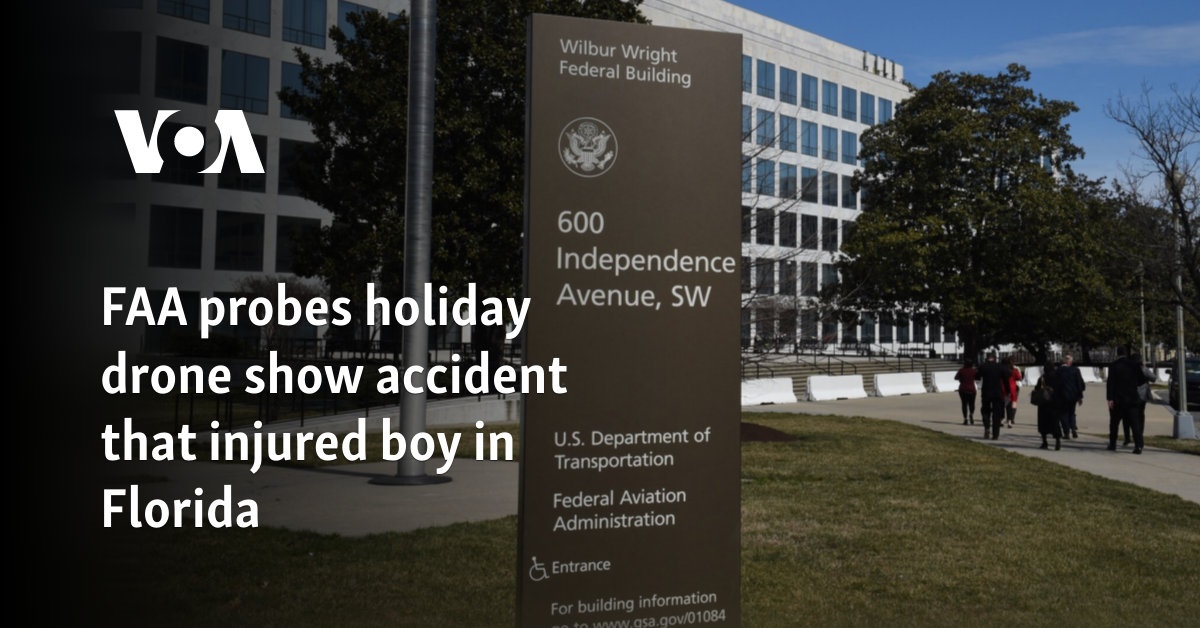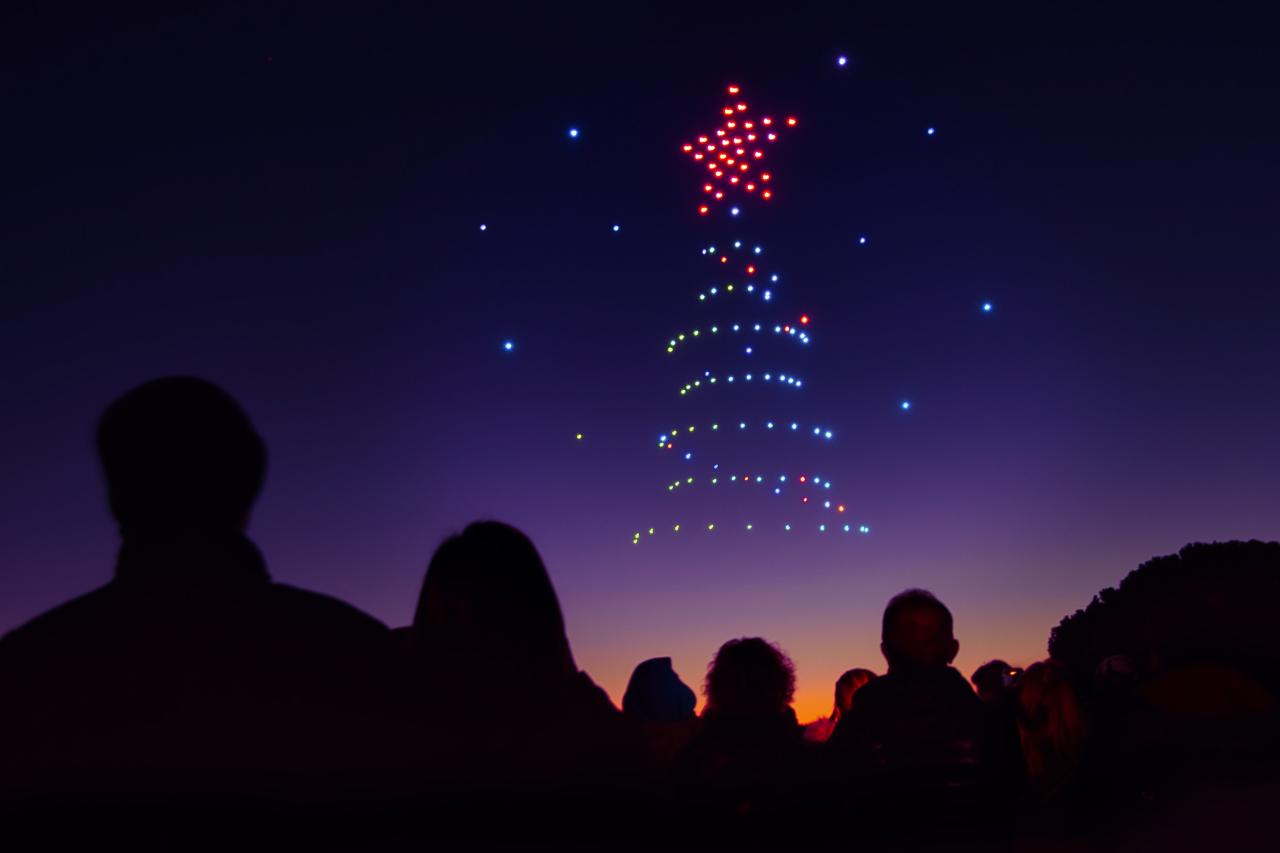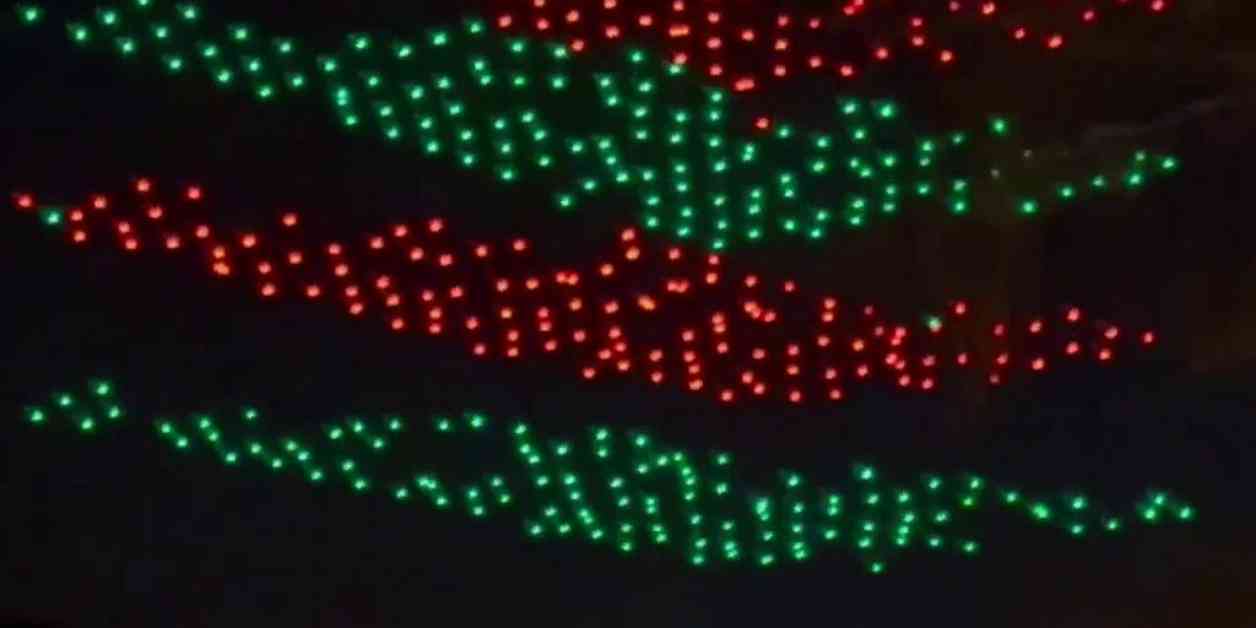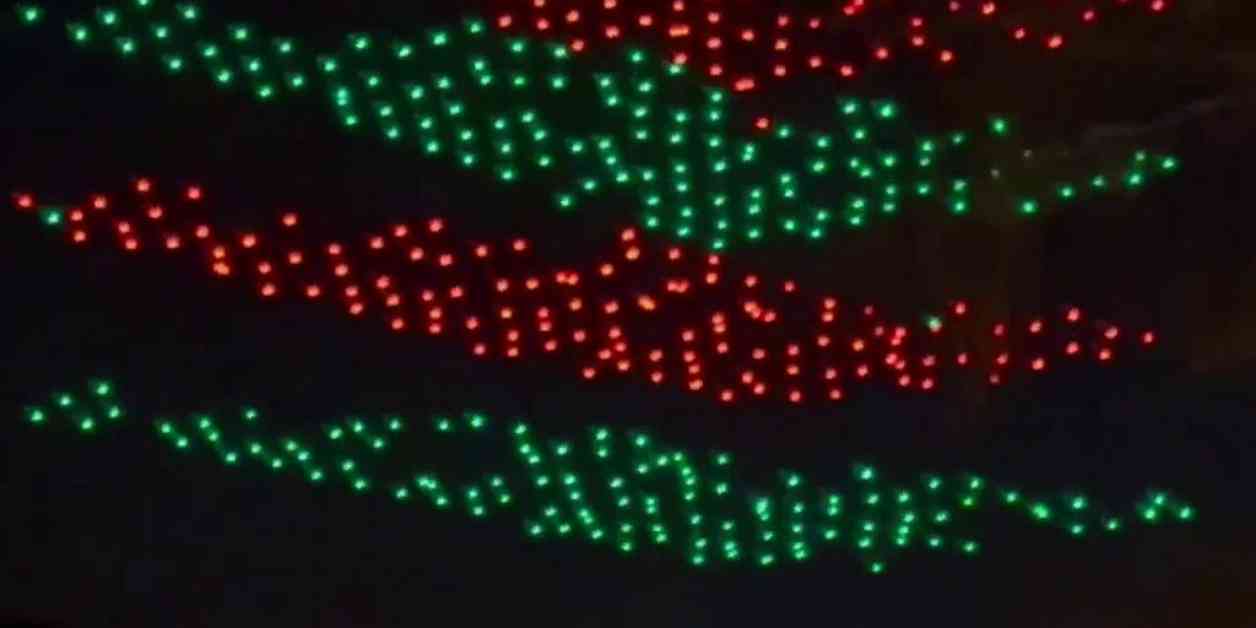Drone show accidents, while relatively infrequent, highlight the inherent risks associated with deploying multiple unmanned aerial vehicles (UAVs) in complex, synchronized performances. These incidents can range from minor malfunctions to catastrophic failures, impacting not only the show’s success but also public safety and the reputation of organizers. This analysis delves into the various causes, consequences, and preventative measures surrounding these occurrences, aiming to provide a thorough understanding of this evolving field.
From software glitches leading to uncontrolled flight paths to mid-air collisions and unexpected environmental factors, the potential for mishaps is significant. Understanding the multifaceted nature of these risks— encompassing technological limitations, human error, and regulatory oversight—is crucial for ensuring the safe and successful execution of future drone light shows. This exploration will examine existing safety protocols, technological advancements aimed at enhancing safety, and impactful case studies to illuminate best practices and areas needing further development.
Drone Show Accidents: A Comprehensive Analysis

Drone light shows, while spectacular, carry inherent risks. Understanding these risks, implementing robust safety measures, and leveraging technological advancements are crucial for ensuring the safe and continued enjoyment of these captivating displays. This analysis delves into the various aspects of drone show accidents, exploring their causes, consequences, and preventative strategies.
Recent drone show accidents highlight the need for stringent safety protocols. These incidents underscore the complexities of large-scale aerial displays, prompting comparisons to other large-scale operations requiring precise coordination, such as tracking Santa’s journey – you can find the NORAD Santa Tracker phone number here: norad santa tracker phone number – which also demands flawless execution.
Ultimately, both drone shows and Santa tracking benefit from meticulous planning to prevent mishaps.
Types of Drone Show Accidents
Drone show accidents encompass a range of incidents stemming from various malfunctions and unforeseen circumstances. These accidents can be categorized based on their nature and severity, requiring a multifaceted approach to prevention and mitigation.
| Accident Type | Cause | Severity | Prevention Measures |
|---|---|---|---|
| Drone Malfunction (e.g., motor failure, GPS error) | Mechanical defects, software glitches, environmental factors (e.g., strong winds, electromagnetic interference). | Low to High (depending on the extent of the malfunction and resulting impact). | Rigorous pre-flight checks, redundant systems (e.g., backup motors, GPS), robust software testing, and weather monitoring. |
| Drone-Drone Collision | Poor flight planning, inadequate spacing between drones, loss of control, communication failures. | Medium to High (depending on the number of drones involved and resulting damage). | Advanced flight planning software, real-time collision avoidance systems, and effective communication protocols. |
| Drone-Object Collision | Inadequate site assessment, unforeseen obstacles, loss of control, inaccurate GPS data. | Low to High (depending on the nature of the object and impact force). | Thorough site surveys, obstacle mapping, and robust obstacle avoidance systems. |
| Drone-Person Collision | Loss of control, unpredictable flight paths, inadequate safety zones. | High (potential for serious injury or fatality). | Clearly defined safety zones, crowd control measures, emergency response plans, and robust safety protocols. |
| Loss of Control | Software glitches, GPS signal loss, radio interference, operator error. | Medium to High (depending on the duration of loss of control and resulting impact). | Redundant communication systems, fail-safe mechanisms, comprehensive operator training, and emergency landing procedures. |
| Software/Firmware Issues | Bugs in the flight control software or firmware, leading to unexpected drone behavior. | Low to High (depending on the nature of the glitch and its impact). | Rigorous software testing, regular firmware updates, and independent code audits. |
Safety Regulations and Protocols, Drone show accident
Comprehensive safety regulations and protocols are paramount for mitigating risks associated with drone light shows. These guidelines cover various aspects, from pre-flight checks to operator training and emergency procedures.
- Many countries and regions are developing specific regulations for drone shows, often focusing on airspace restrictions, pilot licensing, and insurance requirements. These vary significantly, with some regions having more mature regulatory frameworks than others.
- Operators are responsible for safe flight operations, adhering to regulations, and performing pre-flight checks. Organizers are responsible for overall show safety, including site selection and crowd management. Regulatory bodies oversee compliance and enforce regulations.
- Pre-flight checks should include verifying drone functionality, battery levels, GPS signal strength, and communication links. Detailed checklists are essential to ensure no critical steps are missed.
- A pre-show drone inspection checklist should include: visual inspection for damage, functional testing of motors and propellers, battery voltage check, GPS signal verification, and communication system test.
- Various safety certification programs exist for drone pilots, with varying levels of rigor and requirements. These programs aim to standardize pilot competency and ensure adherence to safety standards.
Impact and Consequences of Accidents

Drone show accidents can have significant repercussions, impacting not only the immediate environment but also the reputation and financial stability of involved parties.
Physical damage can range from minor property damage to severe injuries, even fatalities, depending on the scale and nature of the accident. Reputational damage can be extensive, affecting organizers, sponsors, and pilots, potentially leading to loss of future opportunities. Legal liabilities can arise, leading to lawsuits and substantial financial penalties. Economic consequences include repair costs, insurance claims, lost revenue, and potential legal fees.
A scenario illustrating a major accident might involve a large-scale show where multiple drones malfunction, causing widespread damage and injuries. This could result in significant financial losses, legal battles, and a lasting negative impact on public perception of drone shows.
Technological Advancements for Prevention

Technological advancements are playing a crucial role in enhancing drone show safety. These innovations aim to mitigate risks through improved redundancy, real-time monitoring, and autonomous safety systems.
- GPS redundancy, using multiple GPS receivers or alternative positioning systems, improves resilience against signal loss. Collision avoidance systems, utilizing sensors and algorithms, prevent mid-air collisions.
- Artificial intelligence (AI) and machine learning (ML) can analyze flight data in real-time, predicting potential problems and alerting operators. This proactive approach can prevent accidents before they occur.
- Real-time monitoring and control systems allow operators to oversee multiple drones simultaneously, providing a comprehensive view of the show’s status and enabling quick responses to emergencies.
- Advanced communication protocols minimize signal interference, ensuring reliable communication between drones and the control system. This is crucial for maintaining coordinated flight patterns and preventing loss of control.
- A hypothetical multi-layered safety system might incorporate GPS redundancy, collision avoidance, AI-powered anomaly detection, real-time monitoring, and automatic emergency landing capabilities, creating a robust safety net.
Case Studies of Drone Show Accidents

Analyzing past accidents provides invaluable insights into improving safety practices. While specific details of many accidents may not be publicly available due to privacy or ongoing legal proceedings, learning from reported incidents helps shape future preventative measures.
- Example 1: A drone show in [Location] in [Year] experienced a series of malfunctions due to a software glitch in the flight control system, resulting in several drones crashing. The incident led to a review of software development and testing protocols.
- Example 2: Strong winds caused the loss of control of several drones during a show in [Location] in [Year], highlighting the importance of thorough weather assessments and contingency plans.
- Comparison: Both examples demonstrate the need for robust software testing and careful environmental assessments. While one was caused by software issues, the other was environmental, underscoring the need for comprehensive safety measures to account for diverse risk factors.
Ultimately, preventing drone show accidents requires a multi-pronged approach. This involves stringent safety regulations, robust pre-flight checks, the adoption of advanced technologies such as collision avoidance systems and AI-driven monitoring, and a commitment to continuous learning from past incidents. By proactively addressing the technological, operational, and regulatory challenges, the industry can strive toward a future where breathtaking drone light shows are enjoyed safely and reliably by all.
Drone show accidents, while spectacular when they go right, can be quite concerning when things go wrong. Understanding the potential for malfunction is crucial, and recent incidents highlight this need. For instance, investigations into a particular florida drone accident revealed critical safety oversights that could inform better practices for large-scale drone shows. This underscores the importance of rigorous pre-flight checks and contingency planning to prevent future mishaps in drone light shows.
Top FAQs
What is the typical insurance coverage for drone show accidents?
Recent drone show accidents highlight the inherent risks associated with large-scale drone operations. The potential for malfunction is amplified when considering events like the kazan drone attack , which underscores the need for robust safety protocols and emergency response plans. Ultimately, minimizing the chance of such incidents requires careful planning and advanced technology to prevent future drone show mishaps.
Insurance coverage varies widely depending on the insurer, the scale of the show, and the specific policy. It’s crucial to secure comprehensive liability insurance that covers potential property damage, injuries, and reputational harm.
How are drone show accidents investigated?
Investigations often involve multiple agencies, including aviation authorities, local law enforcement, and potentially independent safety experts. Data from flight recorders (if available), witness accounts, and drone system logs are analyzed to determine the root cause.
What are the long-term career implications for drone pilots involved in accidents?
The consequences can range from temporary suspension of licenses to permanent revocation, depending on the severity of the accident and the pilot’s level of responsibility. Reputational damage can also significantly impact future employment prospects.
